GEEKOM A7 mini-PC Review : Premium Phoenix in a Compact 4x4 Package
by Ganesh T S on May 31, 2024 8:00 AM ESTGPU Performance: Synthetic Benchmarks
AMD's Phoenix SoCs include an integrated GPU with a microarchitectural update over the one in the Rembrandt-R SoCs. The new RDNA3 microarchitecture is present in the Ryzen 9 7940HS in the form of the Radeon 780M. With 12 CUs and 768 shader units clocked at 2.8 GHz, AMD claims that the GPU should be capable of playing virtually any modern game at Full HD resolutions.
For full-blown desktop systems or mini-PCs targeting the gaming market, we look at gaming workloads. However, for general-purpose mini-PC models like the GEEKOM A7, we restrict ourselves to a series of canned benchmarks from Kishonti and Futuremark / UL. Prior to that, a look at the capabilities of the GPU via GPU-Z is warranted.
The Radeon 780M includes support for hardware ray tracing with improved performance over the Radeon 680M in Rembrandt-R. There are some improvements in the media engine too (such as AV1 encode support), but those are not revealed in the GPU-Z screenshot. The remaining subsections below look into the performance aspects.
GFXBench
The DirectX 12-based GFXBench tests from Kishonti are cross-platform, and available all the way down to smartphones. As such, they are not very taxing for discrete GPUs and modern integrated GPUs. We processed the offscreen versions of the 'Aztec Ruins' benchmark.

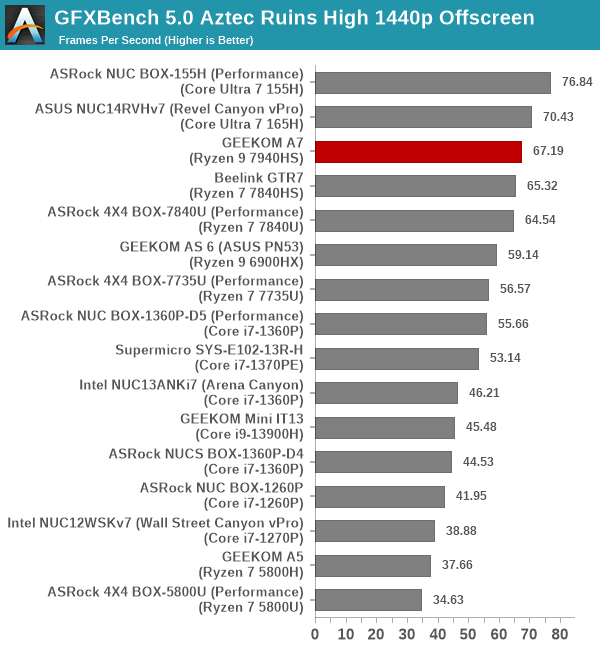
Intel's iGPU implementation of the Arc microarchitecture surpasses RDNA3's performance in the GFXBench 5.0 workloads, as the two Meteor Lake-H PCs in the comparison list both score a bit higher than the GEEKOM A7.
UL 3DMark
Four different workload sets were processed in 3DMark - Fire Strike, Time Spy, Night Raid, and Wild Life.
3DMark Fire Strike
The Fire Strike benchmark has three workloads. The base version is meant for high-performance gaming PCs. It uses DirectX 11 (feature level 11) to render frames at 1920 x 1080. The Extreme version targets 1440p gaming requirements, while the Ultra version targets 4K gaming system, and renders at 3840 x 2160. The graph below presents the overall score for the Fire Strike Extreme and Fire Strike Ultra benchmark across all the systems that are being compared.
| UL 3DMark - Fire Strike Workloads | |||
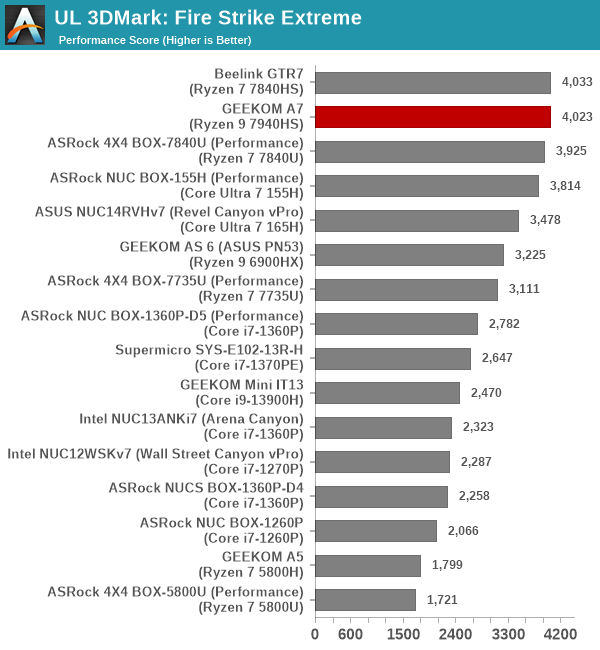
The RDNA3 iGPU emerges the winner here, with the three Phoenix systems taking up the top 3 slots ahead of the MTL-H systems. The faster clocks appear to help the A7 get to the top spot despite the lowered power budget in the 4K case.
3DMark Time Spy
The Time Spy workload has two levels with different complexities. Both use DirectX 12 (feature level 11). However, the plain version targets high-performance gaming PCs with a 2560 x 1440 render resolution, while the Extreme version renders at 3840 x 2160 resolution. The graphs below present both numbers for all the systems that are being compared in this review.
| UL 3DMark - Time Spy Workloads | |||
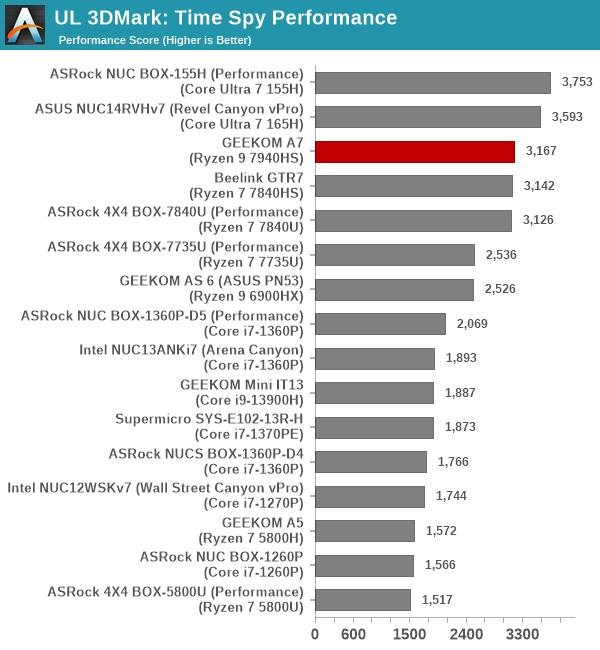
The RDNA3 iGPU systems are behind the Arc-based MTL-H systems in both versions of the Time Spy benchmark. Within the Phoenix family, the A7 edges ahead slightly thanks to the higher clock speeds for the iGPU.
3DMark Wild Life
The Wild Life workload was initially introduced as a cross-platform GPU benchmark in 2020. It renders at a 2560 x 1440 resolution using Vulkan 1.1 APIs on Windows. It is a relatively short-running test, reflective of mobile GPU usage. In mid-2021, UL released the Wild Life Extreme workload that was a more demanding version that renders at 3840 x 2160 and runs for a much longer duration reflective of typical desktop gaming usage.
| UL 3DMark - Wild Life Workloads | |||
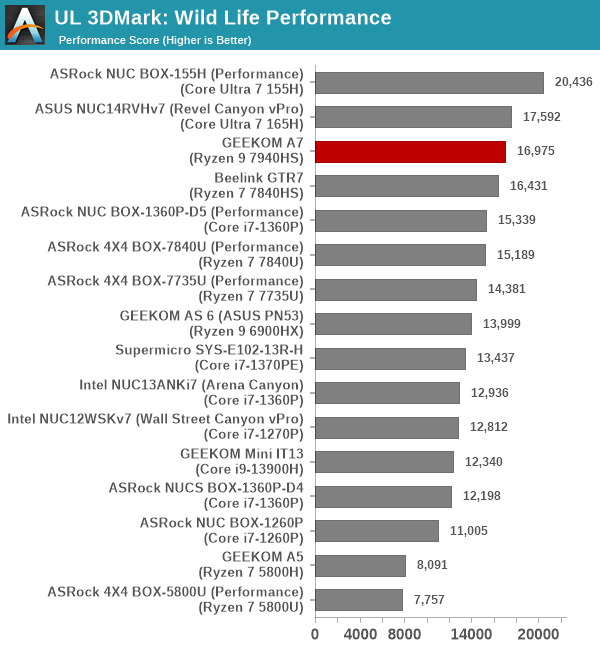
The 1440p version sees the two MTL-H systems take up the top two spots, but the 4K version is more demanding. The RDNA3 iGPU in the A7 stands up along with the one in the 4X4 BOX-7840U to take the lead in that case.
3DMark Night Raid
The Night Raid workload is a DirectX 12 benchmark test. It is less demanding than Time Spy, and is optimized for integrated graphics. The graph below presents the overall score in this workload for different system configurations.
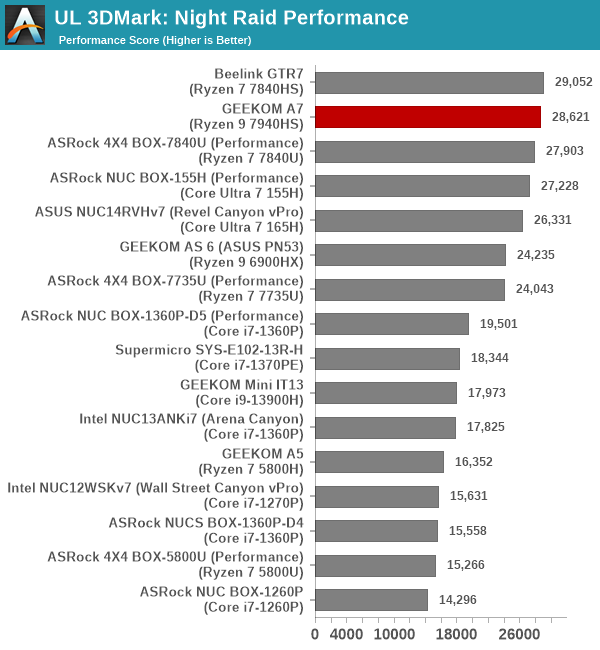
This test appears to rely more on the available power budget within the same family. RDNA3 prevails over Arc in this workload.
3DMark Port Royal
UL introduced the Port Royal ray-tracing benchmark as a DLC for 3DMark in early 2019. The scores serve as an indicator of how the system handles ray-tracing effects in real-time.
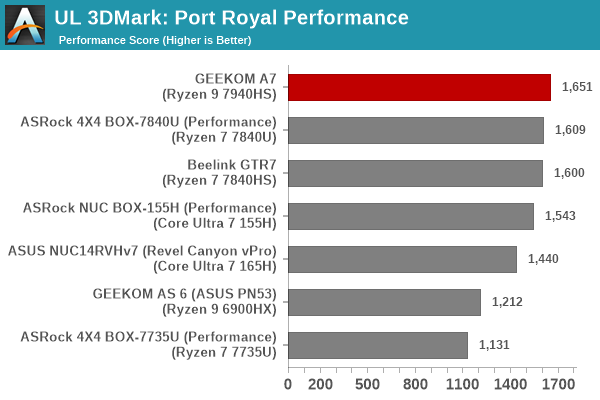
The RDNA3 implementation is the fastest yet, and the higher clock speeds in the A7's Radeon 780M helps it get the top spot. It also appears that the 2nd generation iGPU ray tracing engine delivers the goods better than Intel's first iGPU hardware ray tracer.


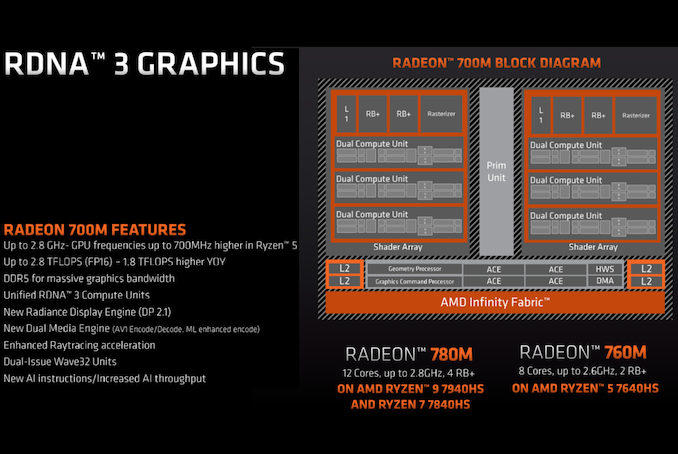









18 Comments
View All Comments
TheinsanegamerN - Friday, May 31, 2024 - link
I feel like I'd be much more excited about these when we get a strix halo version.The Hardcard - Friday, May 31, 2024 - link
The problem is by the time of the review, there will be so many details leaked about Zen 6 products that your excitement for Strix Halo will be crushed.kn00tcn - Friday, May 31, 2024 - link
did you forget what strix halo will be? the single biggest leap in gpu size in any apu ever, it's extremely unlikely that the gen right after that would somehow leap again unless integrated gddr is usedt.s - Saturday, June 1, 2024 - link
bingo!meacupla - Friday, May 31, 2024 - link
The one shortcoming of all these startup mini-PC brands is longer term BIOS support.My 2020 AMD Renoir Dell laptop still gets occasional BIOS updates, but the same cannot be said of the trigkey, kamrui, or bosgame mini-PCs that I have kicking around.
Desierz - Friday, May 31, 2024 - link
Have you considered if they really need BIOS updates?PeachNCream - Friday, May 31, 2024 - link
They generally work with release BIOS versions but its quite common to see updates later resolve problems or enhance relaibility so after sales support can a significant consideration.kn00tcn - Friday, May 31, 2024 - link
have you considered agesa updates have already contained important memory, usb, and security updates multiple times in the past?meacupla - Friday, May 31, 2024 - link
They do. One of them is missing a critical fix for Zen bleed. So it's missing Agesa 1.2.0.bkn00tcn - Friday, May 31, 2024 - link
those sound like random aliexpress 'brands', while geekom or minisforum have been established worldwide names by contrast (not that i've checked their updates, even majors like asrock are disappointing for agesa updates on deskmini/deskmeet)